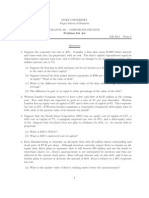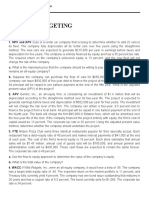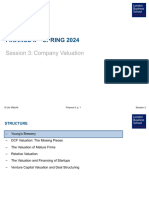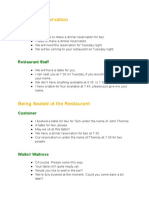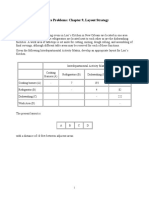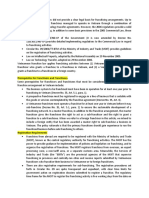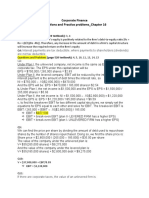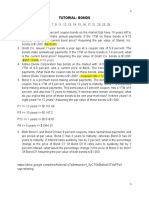0% found this document useful (0 votes)
33 views2 pagesCF - Questions and Practice Problems - Chapter 18
The document discusses corporate finance concepts and practice problems from a textbook chapter. It includes the cash flows for a company, calculations to determine the value of a firm using its debt and equity values, calculations to determine equity betas and cost of equity for companies with different capital structures, and a problem calculating weighted average cost of capital to determine the net present value of a project.
Uploaded by
Lâm Thanh Huyền NguyễnCopyright
© © All Rights Reserved
We take content rights seriously. If you suspect this is your content, claim it here.
Available Formats
Download as DOCX, PDF, TXT or read online on Scribd
0% found this document useful (0 votes)
33 views2 pagesCF - Questions and Practice Problems - Chapter 18
The document discusses corporate finance concepts and practice problems from a textbook chapter. It includes the cash flows for a company, calculations to determine the value of a firm using its debt and equity values, calculations to determine equity betas and cost of equity for companies with different capital structures, and a problem calculating weighted average cost of capital to determine the net present value of a project.
Uploaded by
Lâm Thanh Huyền NguyễnCopyright
© © All Rights Reserved
We take content rights seriously. If you suspect this is your content, claim it here.
Available Formats
Download as DOCX, PDF, TXT or read online on Scribd
/ 2




